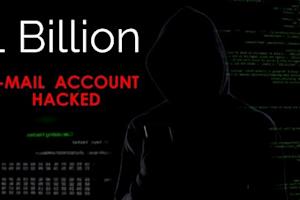Remote Desktop Protocol – wat het is en waarom het niet veilig is
Remote Desktop Protocol (RDP) is een Microsoft-protocol dat is ontworpen om op afstand verbinding te maken met een andere computer.
RDP comes with some very convenient features including screen sharing and the ability to give complete remote control of a device to an IT expert providing technical assistance to a user from far away.
Hoewel deze technologie nu wereldwijd door miljoenen mensen wordt gebruikt, zijn er steeds meer zorgen over de cybersecurity, namelijk dat het wordt gebruikt als aanvalsmogelijkheid voor ransomware.
According to Kaspersky, in early 2021 alone there were more than 377.5 million brute-force attacks targeting RDP. And last year was not any better. RDP attacks grew from 91.3 million in January to more than 277.4 million by March 2020 alone. That's a 197% increase in 3 months!
Considering such a dangerous increase in ransomware attacks targeting RDP, it's time for businesses - especially those with information technology (IT) environments relying on RDP to reconsider their reliance on this now decades-old remote access protocol.
Why Is RDP So Insecure and Increasingly Targeted by Cybercriminals?
We vroegen het aan een paar cybersecurity-experts in verschillende sectoren.
According to Todd Gifford, CTO at Optimizing IT, "RDP has historically been an insecure method of gaining console access to machines across a network because it is enabled by default and open to all on the internet at a network level." And “in many cases," says Todd, "that default open-to-all approach hasn't ever changed, and as a result, there are no good password controls complexity, and account lockout."
Rajesh Parthasarathy, oprichter en CEO van MENTIS, legt uit waarom RDP zulke cruciale beveiligingsfuncties mist.
"Imagine a city built without planning – houses built as per convenience, roads built to offer the least amount of travel, commercial areas, and industries built as per space availability," says Rajesh. "As time progresses, and more and more people start moving in, the city will collapse as it fails to adapt to these evolving needs - RDP or Remote Desktop Protocol suffers from a similar shortcoming."
In other words, RDP was not built to handle today's security concerns and requirements. Hence, it has become outdated and vulnerable to threats, which cybercriminals have noticed.
"Entire attacker ecosystems exist to find open RDP instances and either steal credentials through phishing or guess commonly used username and password combinations until the right pair is found," says Jason Rebholz, CISO at Corvus Insurance.
To this, Todd adds that after working to continuously guess RDP passwords, cyber criminals eventually get in. And "Once the attackers log in," says Todd, "they disable or remove any anti-malware service as well as any logging or any software that might alert an admin to any problems."
Bram Jansen, Chief Editor of vpnAlert, says that "once your endpoint protection is disabled, no security solution will be able to help you if this happens."
Als RDP zo onveilig is, waarom blijven mensen het dan gebruiken?
In een recent interview met Jerry Hsieh, Sr. Director Security & Compliance bij Splashtop, hebben we deze vraag onderzocht.
According to Jerry, IT staff continue to use RDP because it is often free and easy as it is built-in within Microsoft. "This means IT teams don't need to purchase anything special," explains Jerry. "It comes with your Microsoft license, although RDS (Remote Desktop Services) requires additional licenses."
Met steeds meer ransomware-aanvallen die gericht zijn op RDP, is het tijd om alternatieven te verkennen.
Alternatieven voor het Onveilige Remote Desktop Protocol
Virtual Private Networks (VPN) via RDP
Aangezien RDP nooit veilig is, wordt het vaak alleen ingeschakeld voor toegang tot het interne netwerk. Maar wat als gebruikers RDP buiten het bedrijfsnetwerk willen gebruiken? Dan wordt vaak het gebruik van een VPN naast RDP overwogen.
Een virtual private network, of VPN, creëert een internetverbinding tussen twee locaties om gebruikers in staat te stellen op afstand toegang te krijgen tot computers en bestanden in dat netwerk. Omdat VPN wordt beschouwd als een uitbreiding van het bedrijfsnetwerk, denken mensen dat het "veilig" is om RDP via een VPN-tunnel te gebruiken. Er zijn echter veel VPN-kwetsbaarheden in de loop van het decennium aan het licht gekomen.
Beveiligingsproblemen bij VPNs zijn onder meer:
VPN infrastructure updates are primarily manual, not automatic. That is because critical security features like multi-factor authentication and device authentication are not always included. This can expose remote devices and corporate networks to lateral threats, such as ransomware - the same threats that concern RDP.
VPNs are not Zero Trust Network Access ready.
A Zero Trust Network Access (ZTNA) framework is made of a set of technologies that operates on an adaptive trust model. Access to information and networks is granted only according to user permissions. Ultimately, the ZTNA framework gives users seamless connectivity without compromising security or safety for both individuals and their data. Due to the way traditional VPNs work, they cannot support ZTNA. For all these security concerns, a 2019 Gartner report predicted that by 2023, 60% of enterprises would phase out their remote access VPN in favor of more secure solutions.
Bovendien hebben VPNs aanzienlijke nadelen op het gebied van schaalbaarheid en prestaties:
Aangezien een VPN niet is gebouwd om zwaar verkeer en meerdere gebruikers tegelijk te verwerken, is het moeilijk om het op grote schaal in te zetten om te voldoen aan de behoeften van een volledig extern of hybride personeelsbestand
Het schalen van een VPN-netwerk vereist een upgrade van de VPN-CPU/-geheugen, wat zich vertaalt in een lang en gecompliceerd proces voor IT. En vaak bieden VPNs niet de mogelijkheid om te upgraden. Dit dwingt veel gebruikers om een nieuwer en duurder model aan te schaffen.
Each employee needs a company-issued device for a VPN to work in a remote office setup. As a result, BYOD devices (such as employees' home devices) cannot be leveraged.
Remote Access-software – het moderne alternatief voor RDP?
Net als RDP en VPN biedt remote access-software de mogelijkheid om altijd en overal toegang te krijgen tot een computer of apparaat vanaf een ander apparaat.
Unlike a VPN, remote access software is built to handle high traffic and provides complete access to remote computers' files and applications, regardless of the network. This makes it more suitable than a VPN for a remote or hybrid environment.
Unlike RDP, remote access software is also more prepared to handle today's security concerns. It comes with built-in security features like SSO (Single Sign-On), MFA (Multi-Factor Authentication), device authentication, and automatic infrastructure updates to keep updated with security standards. It’s almost maintenance free.
While there are many remote access software providers in the market, Splashtop offers one of the most secure in the market. Although some remote access software companies build their software on top of the RDP infrastructure, Splashtop took a different approach to create something unique for the sake of security and a better user experience. This positions Splashtop software as a next-generation remote access software built to handle today's security challenges in remote connections.
Hoe is Splashtop Next-Gen Remote Access-software beter en anders dan RDP?
Splashtop mede-oprichter en CTO Phil Sheu antwoordde dit in een recent Splashtop-interview over RDP.
"Let's say you have a house on the street, the door is open, and all your belongings are basically on display, "says Phil. "While the entire surrounding area wouldn't know that your door is open, anyone walking by can easily tell that no one is home, and your door is open." That scenario depicts RDP.
"Now take this same house and put it in a gated community with a guard, shut the door, and lock the gate," continues Phil. "The security guard is checking visitation permissions, no one outside the gate can see your house and its belongings, whether or not you are home, and you can invite a particular person in, but you do not have an open invitation for anyone else to peek in."
That's how you should visualize Splashtop next-gen remote access software and how it is fundamentally safer and better than RDP and VPN.

Splashtop 次世代リモートアクセスインフラストラクチャ
Haven’t tried Splashtop yet? Try it for free.




